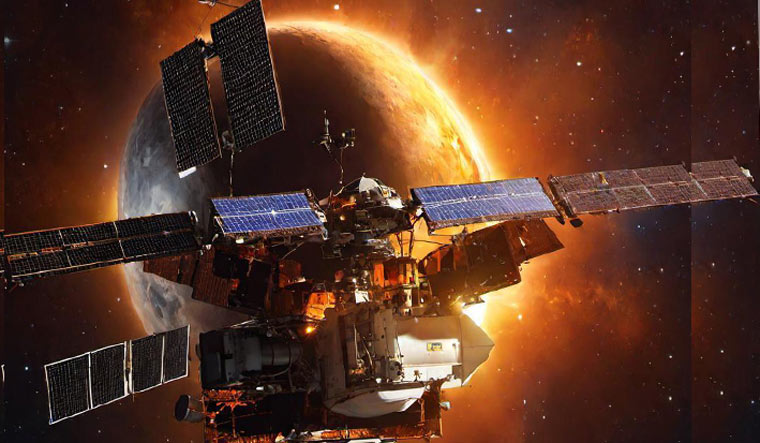- ISRO successfully launched India’s first solar observatory mission, Aditya-L1, on September 2.
- The spacecraft’s mission, carried by the PSLV in its 59th flight, is to research the sun’s behaviour and phenomena.
- Aditya-L1 will orbit the Earth for 16 days, performing five manoeuvres to maintain the requisite velocity.
- Following Trans-Lagrangian insertion, a 110-day trek towards L1 Lagrange point will commence.
- Aditya-L1 will orbit around L1, 1.5 million kilometres distant, at a balanced position between Earth and the sun.

Aditya-L1 Mission
- ISRO unveils the Aditya-L1 project, a new space-based observatory designed to study the Sun.
- The spacecraft will be in a halo orbit around the Sun-Earth system’s Lagrange point 1 (L1), roughly 1.5 million km from Earth.
- The strategic location of the L1 point allows for continuous solar observation free of eclipses, providing significant insights into solar activities and their real-time effects on space weather.
- Aditya will leave Earth’s sphere of influence and travel 1.5 million km to the Lagrange point L1.
The Importance of Lagrange Point 1
- Lagrange points are equilibrium places where gravitational forces balance centripetal pressures, providing satellites with a stable environment.
- The spacecraft will be positioned around L1, allowing for unimpeded observation of the Sun.
- Different Lagrange locations provide distinct advantages, such as the Solar and Heliospheric Observatory Satellite’s (SOHO) continuous view of the Sun.
Aditya-L1’s Scientific Projects
- Aditya-L1 includes seven payloads that use a variety of detectors to examine the photosphere, chromosphere, and corona.
- Visible Emission Line Coronagraph (VELC), Solar Ultraviolet Imaging Telescope (SUIT), Solar Low Energy X-ray Spectrometer (SoLEXS), and other instruments are among the payloads.
- Payloads studying solar dynamics in the interplanetary medium help us understand phenomena such as coronal heating, mass ejections, and space weather.
The Importance of Solar Research
- Solar Impact on the System: The Sun influences planetary evolution and weather, as well as satellites, electronics, electrical systems, and even Earth’s climate.
- Predicting Solar Storms: Continuous solar observations are critical for following and predicting the potential repercussions of Earth-bound solar storms.
- All solar storms headed towards Earth pass via L1, making it an important location for monitoring.
The Mighty LAM Engine is a key feature.
- The Liquid Apogee Motor (LAM) engine developed by ISRO’s Liquid Propulsion Systems Centre (LPSC) is critical to the success of the Aditya-L1 mission.
- LAM has been critical in missions such as the Mars Orbiter Mission (Mangalyaan) and Chandrayaan-3.
- LAM engines allow satellites and spacecraft to modify their orbits, saving fuel and assuring optimal location.
Source: https://www.indiatoday.in/science/story/isro-launches-aditya-l1-mission-to-study-sun-15-lakh-km-long-journey-begins-2429727-2023-09-02#:~:text=Satellite%20Launch%20Vehicle.-,Aditya%2DL1%20is%20India's%20pioneering%20mission%20to%20study%20the%20Sun,of%20the%20Sun%2DEarth%20system.
